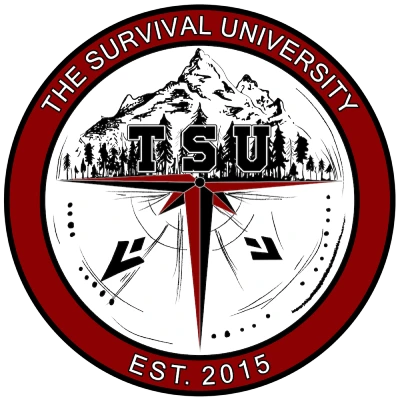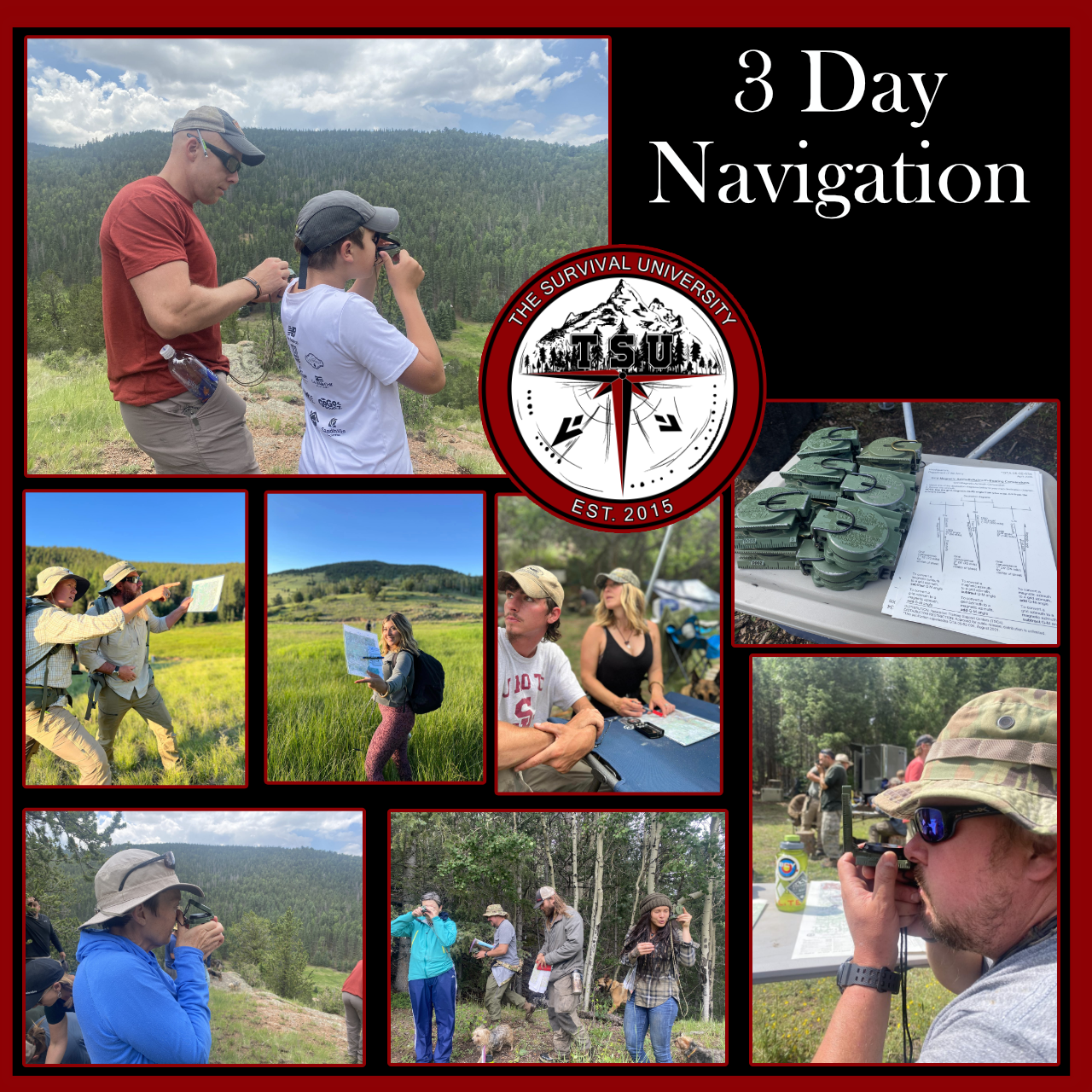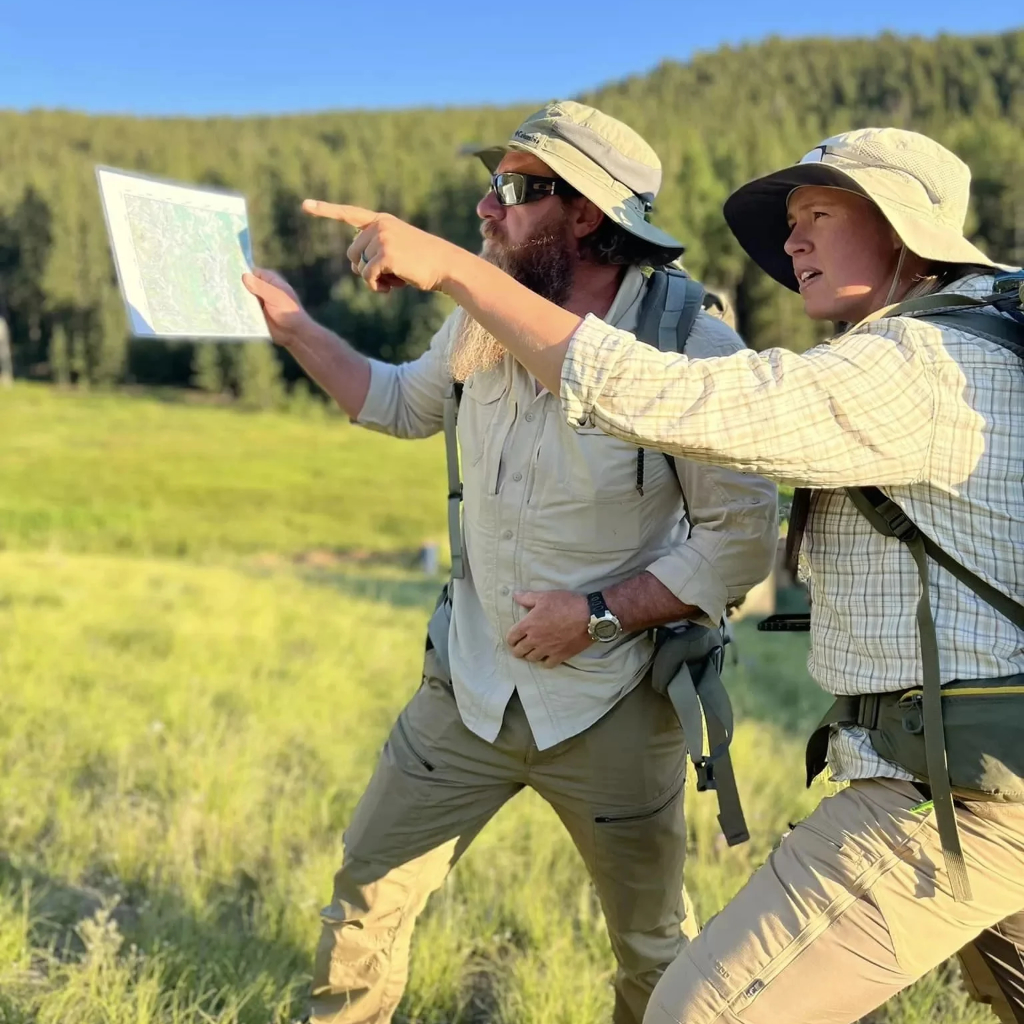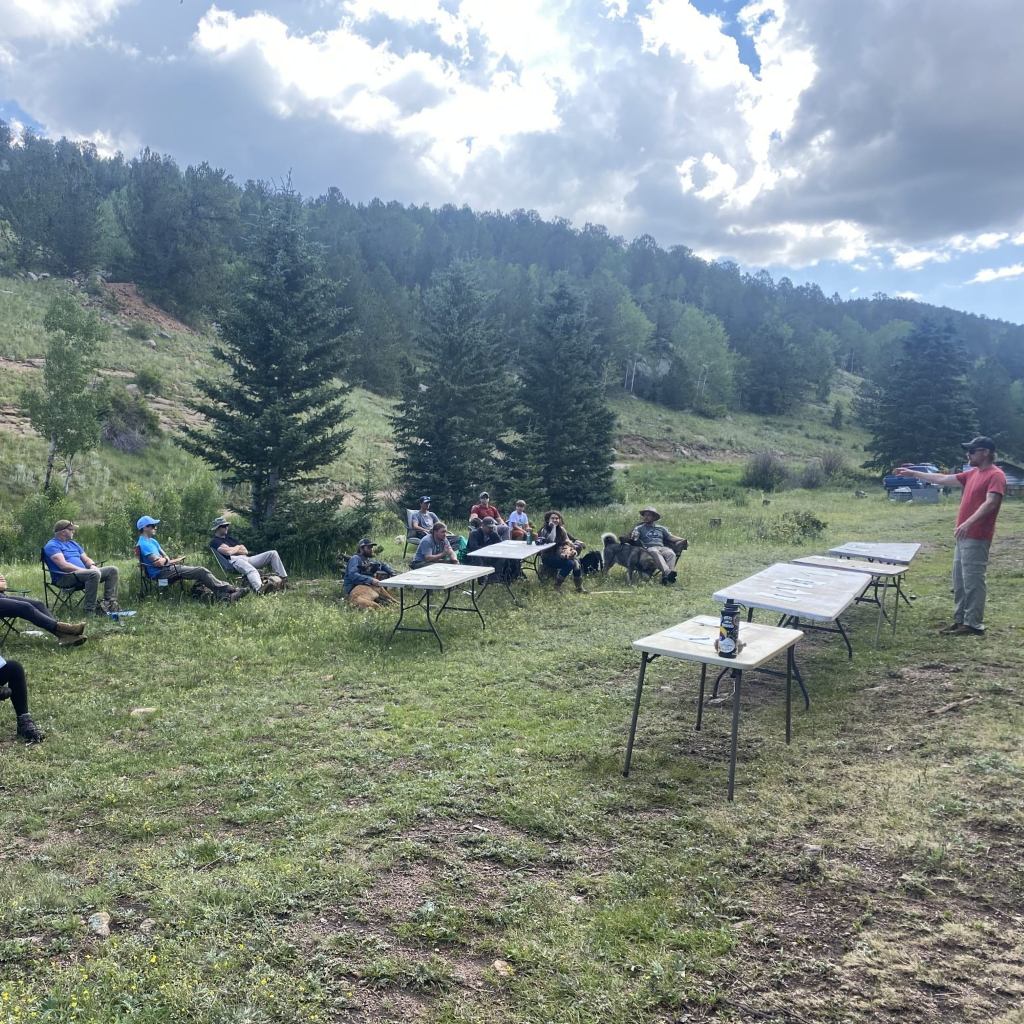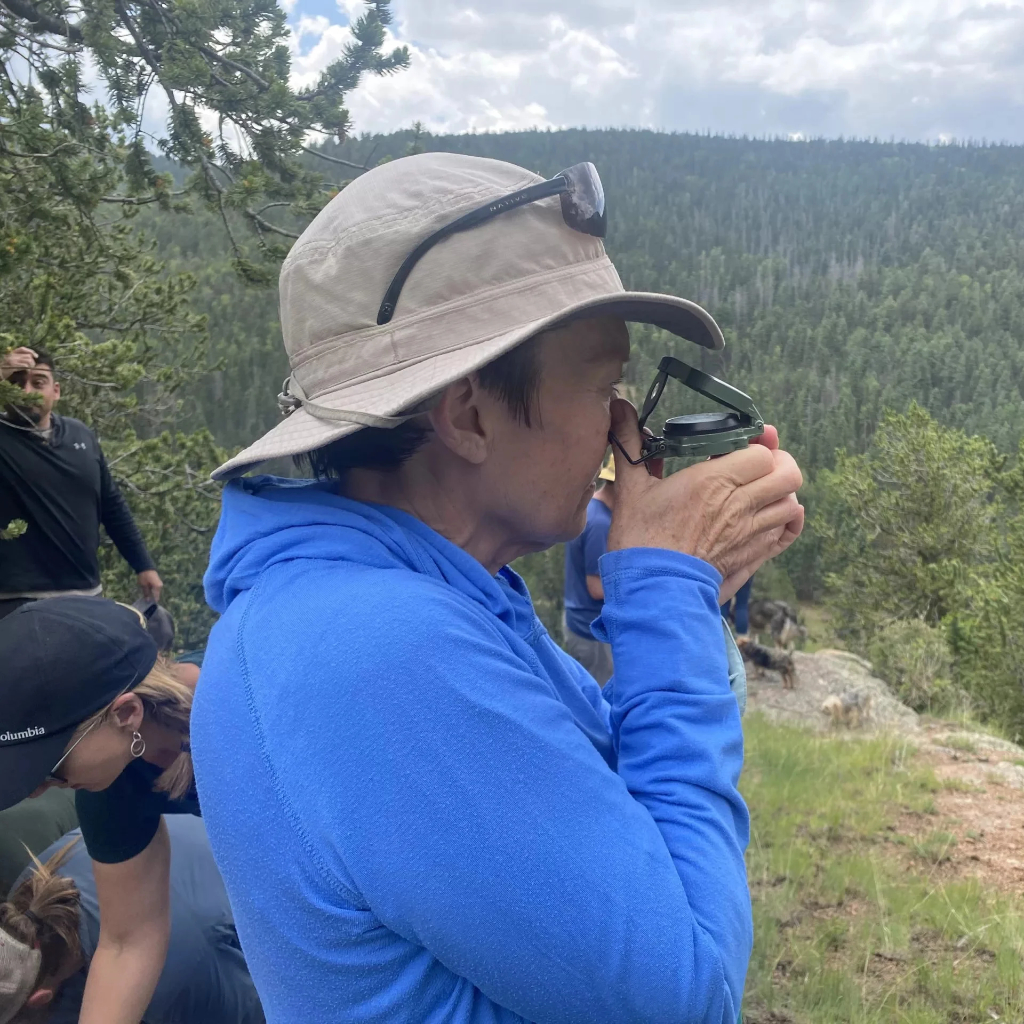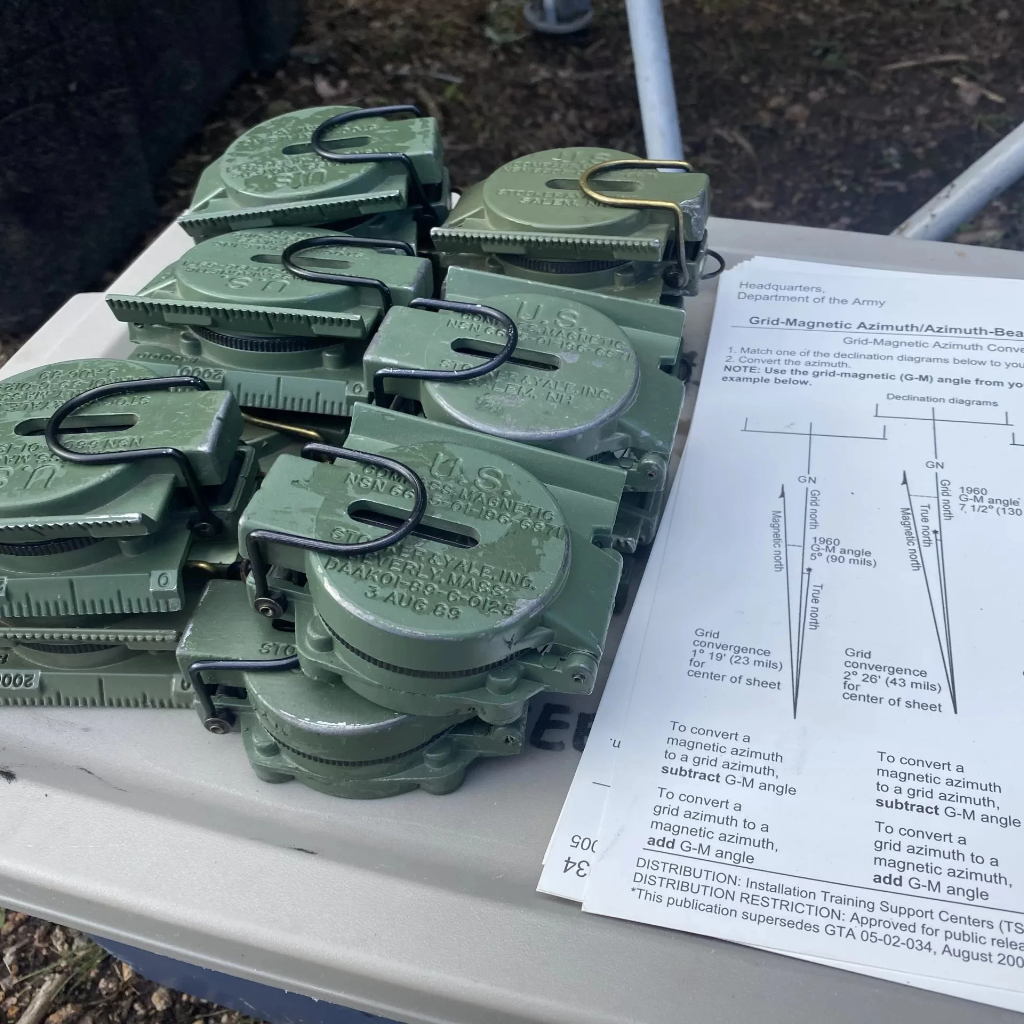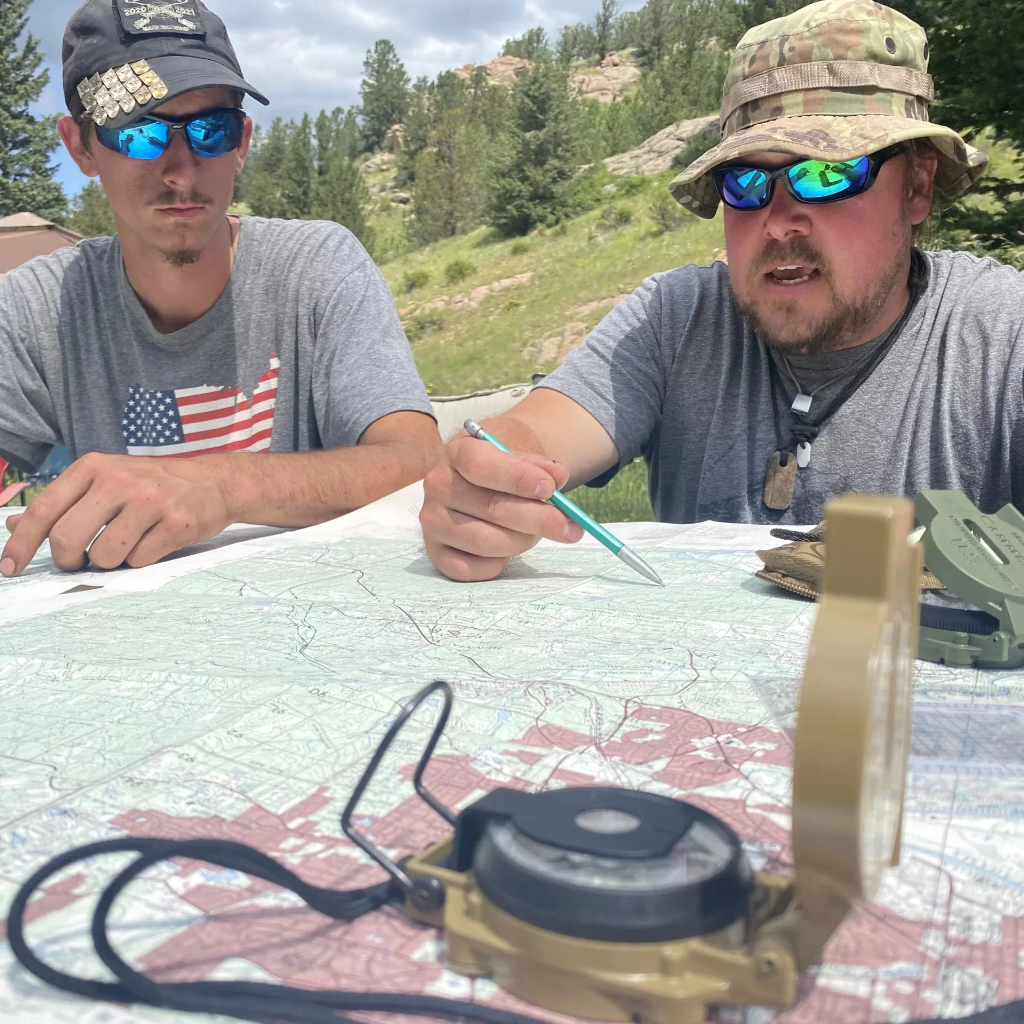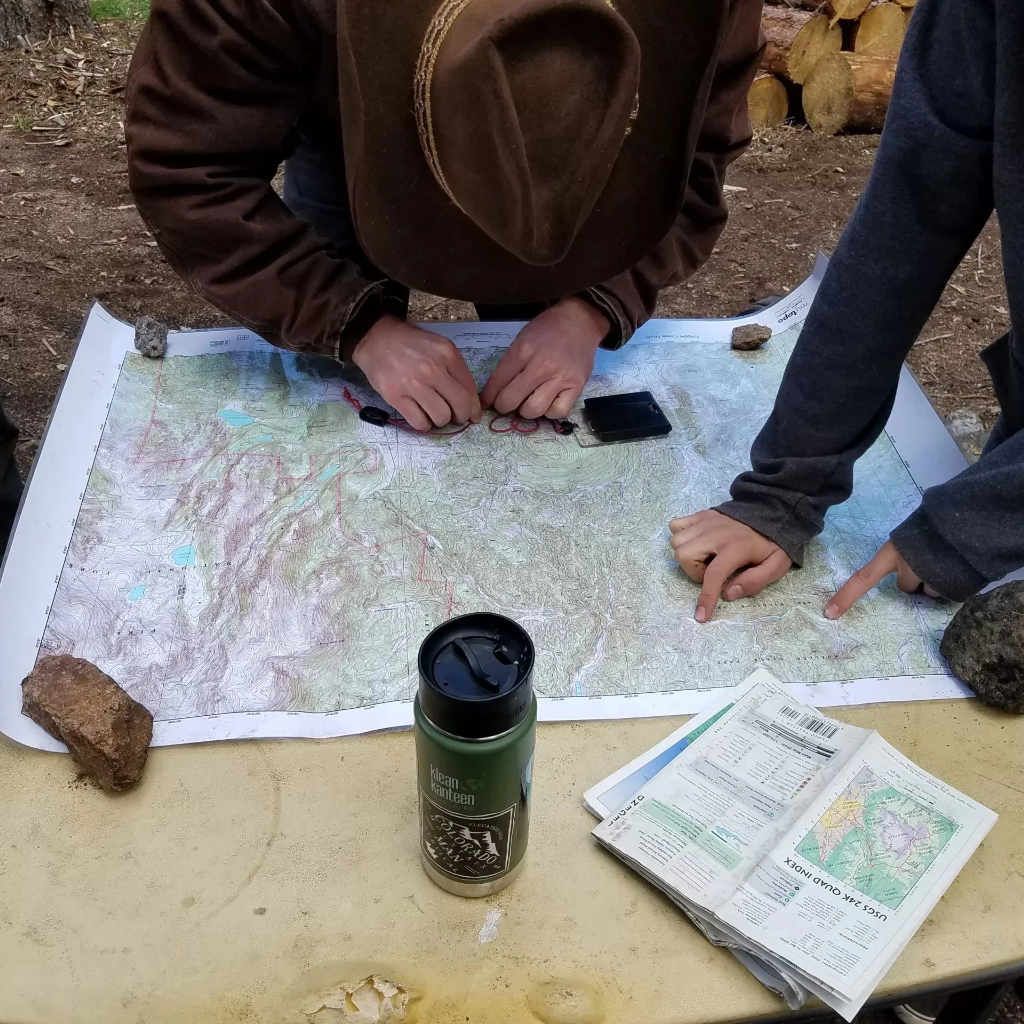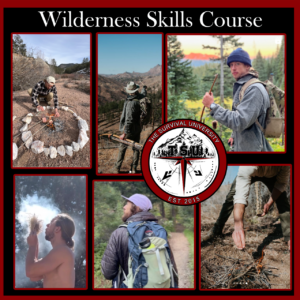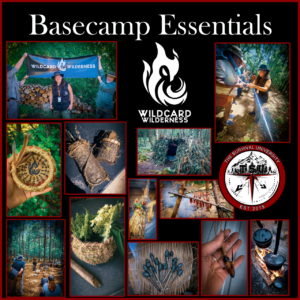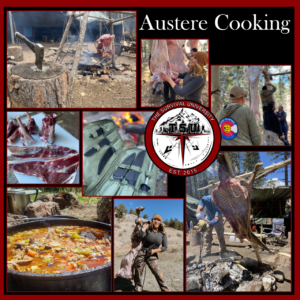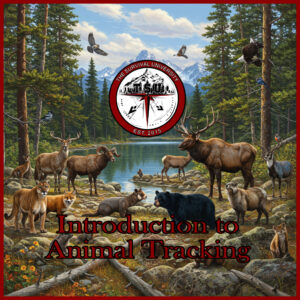Cart
Land Navigation: Map & Compass Skills for the Backcountry
$495.00
Afraid of getting lost in the woods? Does the thought of using a map and compass stress you out? Let us help you banish that fear and uncertainty! Our Land Navigation 101 course will teach you how to use these basic tools to plot courses into the backcountry, and how to plot courses back out again.
Our Land Navigation I Course is designed to teach students to confidently navigate the outdoors.
Description
Land Navigation: Map & Compass Skills for the Backcountry
Master the Art of Navigation with a Map, Compass, and Confidence
Do you worry about getting lost in the woods? Does using a map and compass feel confusing or intimidating? You’re not alone—and this course is here to change that. Our Land Navigation 101 course is designed to eliminate the fear of getting lost and replace it with real-world skills, hands-on training, and true backcountry confidence.
This intensive 30-hour wilderness navigation course teaches you how to read topographic maps, use both orienteering and lensatic compasses, and apply terrain association to travel through the backcountry—without ever needing a GPS. Whether you’re a hiker, hunter, search and rescue volunteer, or backcountry adventurer, this course gives you the tools to navigate like a pro.
What You’ll Learn in This Land Navigation Course
-
Topographic Map Reading
Learn to interpret map legends, terrain features, contour lines, relief shading, grid systems, UTM coordinates, and more. -
Compass Selection & Use
Understand the differences between orienteering compasses and lensatic compasses, and how to shoot accurate azimuths and bearings with both. -
Terrain Association
Develop the ability to read and match terrain in real life to what you see on the map, including ridges, spurs, saddles, valleys, and reentrants. -
Route Planning & Field Navigation
Practice plotting and following your own routes, measuring distance using your pace count, and navigating with safety bearings, back azimuths, and guide rails. -
Hands-On Map & Compass Exercises
Apply your skills immediately on our 1,100-acre training site, with real terrain challenges and navigation exercises—including elements that simulate orienteering and even basic geocaching scenarios. -
Advanced Navigation Techniques
Learn how to navigate using triangulation, dead reckoning, and nighttime navigation under limited light.
What’s the Difference Between Land Navigation and Orienteering?
Orienteering is a timed sport that involves navigating between checkpoints using a map and compass. This course, while incorporating some orienteering-style challenges, focuses on the real-world application of navigation in wilderness settings—no time limits, no competitions—just solid skills to get you in and out of the backcountry safely and confidently.
Why Take a Map & Compass Navigation Course?
Learning land navigation opens up the outdoors in a way that GPS can’t. Whether you’re searching for remote hunting spots, hiking off-trail, or curious about geocaching, this class gives you the tools to explore beyond the beaten path—and return safely.
Who Should Take This Course?
-
Hikers, backpackers, and trail explorers
-
Hunters and anglers venturing off-grid
-
SAR and emergency personnel
-
Military service members and civilians preparing for self-reliance
-
Orienteering beginners who want foundational map and compass skills
- Advanced orienteering competitors looking to sharpen terrain association and improve speed and accuracy in real-world environments
-
Anyone who wants to go beyond GPS and navigate with confidence
Course Outcomes
By the end of this course, you will:
-
Navigate confidently using a topographic map, compass, and protractor
-
Identify and interpret terrain features in real environments
-
Plan and follow routes with terrain-based navigation strategies
-
Use back azimuths, triangulation, and pacing in practical field conditions
-
Understand the difference between GPS navigation, orienteering, and traditional map-and-compass travel
-
Move through the wilderness independently—day or night, with or without trails
LENGTH
3 days/2 night
RECOMMENDED READING
Wilderness Navigation: Finding Your Way Using Map, Compass, Altimeter & GPS (Mountaineers Outdoor Basics) BY Bob Burns
ACCOMMODATIONS
- Shelter Lodging: Dispersed Camping
- Sanitation/Hygiene: A portable restroom and potable water will be provided at main camp.
If students do not wish to camp with us, the town of Cripple Creek is a short 15 minute drive from our location and Woodland Park is 30 minutes away. Students will be responsible for making their own reservations with nearby hotels. We do have a central community campfire location with a few designated campsites but mostly offer dispersed camping. Students will be able to drive their car within 100 feet of the main camp and will not have to hike gear in for long distances.
FOOD AND WATER REQUIRED
Water will be provided but students will need to bring their own food. We recommend quick field expedient meals such as freeze dried hiking meals or MRE’s. They can quickly be made at our primitive camps and won’t slow down the learning process. However, students may bring any food that they wish to cook over the campfire or on their own personal camp stove.
Food can be purchased locally at nearby facilities. Walmart and several local eateries are within a reasonable driving distance.
SUGGESTED GEAR LIST
We do not provide students with gear unless they have purchased it from us ahead of time. Not much gear is needed for our courses, though good equipment does speed the learning process up greatly! Gear does not have to be purchased from our store to attend the course, but we recommend survival gear of equivalent quality.
- Orienteering Compass or Military Style Lensatic Compass (we recommend a SUUNTO MC-2DLIN Navigator [orienteering], Cammenga Tritium H3 [lensatic] or equivalent compass of your choice)
- Ultra Fine Point Map Markers – (Staedtler Permanent Markers)
- Fixed blade knife (Preferably a full tang bushcraft style knife WITHOUT a serrated edge)
- Poncho or Rain Gear
- Outdoor Clothing and appropriate footwear
- Overnight Camping Gear: Tent, sleeping bag, ground pad, etc
- Headlamp
- Cooking pot and eating utensils
- Single walled metal canteen
- Notepad and pencil
- Sunscreen and sunglasses
- Small Backpack
CLOTHING REQUIRED
Warm outdoor clothing, warm gloves and hat, outdoor boots and wool socks. Cotton clothing is highly discouraged in the mountains! Wool will keep you warm even when wet and synthetics will dry faster. Layers are important in Colorado. You will want a water wicking base layer, an insulating mid layer, and a waterproof breathable outer shell. Check out our Clothes Layering Basics if you are unsure of what to wear.
Check Recommended Items List for more details!
If it is still not clear what gear is needed for our survival courses, then we have assembled a complete kit that is still high quality but for a budget friendly price. All the items in this kit were hand selected by our instructors to be the best bushcraft tools on a budget. This survival kit is a useful starter kit that can be used in all of our courses. These are all must have tools at a good price. It’s a great survival kit, bug out kit, go bag, or use it as a solid foundation to build a kit that perfectly fits your needs. With this kit and our training anybody can survive like a king in almost any environment!
NOTE
Due to the different levels of prior experience and knowledge among students in each class, individual outcomes may vary. Weather conditions can also be a factor in changing class content slightly. Nonetheless, our instructors will always endeavor to be as accommodating and consistent as circumstances will allow to ensure students get the best training experience and value for money.
Start Time: 8:00am (check-in starts at 7:00am)
End Time: 5:00pm
There will be a significant amount of hiking. Wear comfortable shoes.
Land Navigation 101 – Required Gear List
This is a hands-on field course with both day and night navigation components. Be prepared for hiking, mapwork, backcountry camping, and exposure to the elements. All gear must be carried in by the participant.
Navigation Tools
-
Orienteering Compass or Military-Style Lensatic Compass
(Recommended: Suunto MC-2DLIN or Cammenga Tritium H3) -
Ultra-Fine Point Permanent Map Markers
(Staedtler Lumocolor or equivalent) -
Protractor (UTM-compatible if possible)
-
Notepad and pencil (weather-resistant preferred)
-
Optional: Baseplate magnifier or lens for fine map detail
Personal Gear
-
Fixed-blade knife
(Full tang, bushcraft-style, no serrated edge) -
Small backpack or daypack
(Comfortable for carrying essentials across terrain) -
Outdoor clothing
(Layered and weather-appropriate; NO cotton) -
Sturdy hiking boots or trail shoes
-
Poncho or rain gear
-
Sunscreen and sunglasses
-
Headlamp (with extra batteries)
-
Single-walled metal canteen (for boiling water if needed)
-
Cooking pot and utensils
-
Food for all days of the course (backpacking meals, MREs, etc.)
Camping Equipment
-
Tent, tarp, or bivy shelter
-
Sleeping bag (rated for the season)
-
Sleeping pad or ground mat
-
Personal hygiene kit (toothbrush, biodegradable soap, TP, etc.)
-
Trash bag (Leave No Trace)
Optional but Useful
-
Pace beads or ranger beads (for distance tracking)
-
Extra map case or ziplock for waterproofing maps
-
Gaiters (for brushy or wet terrain)
-
Gloves (lightweight for mapwork or warmth at night)
-
Bug spray or head net (seasonal)
